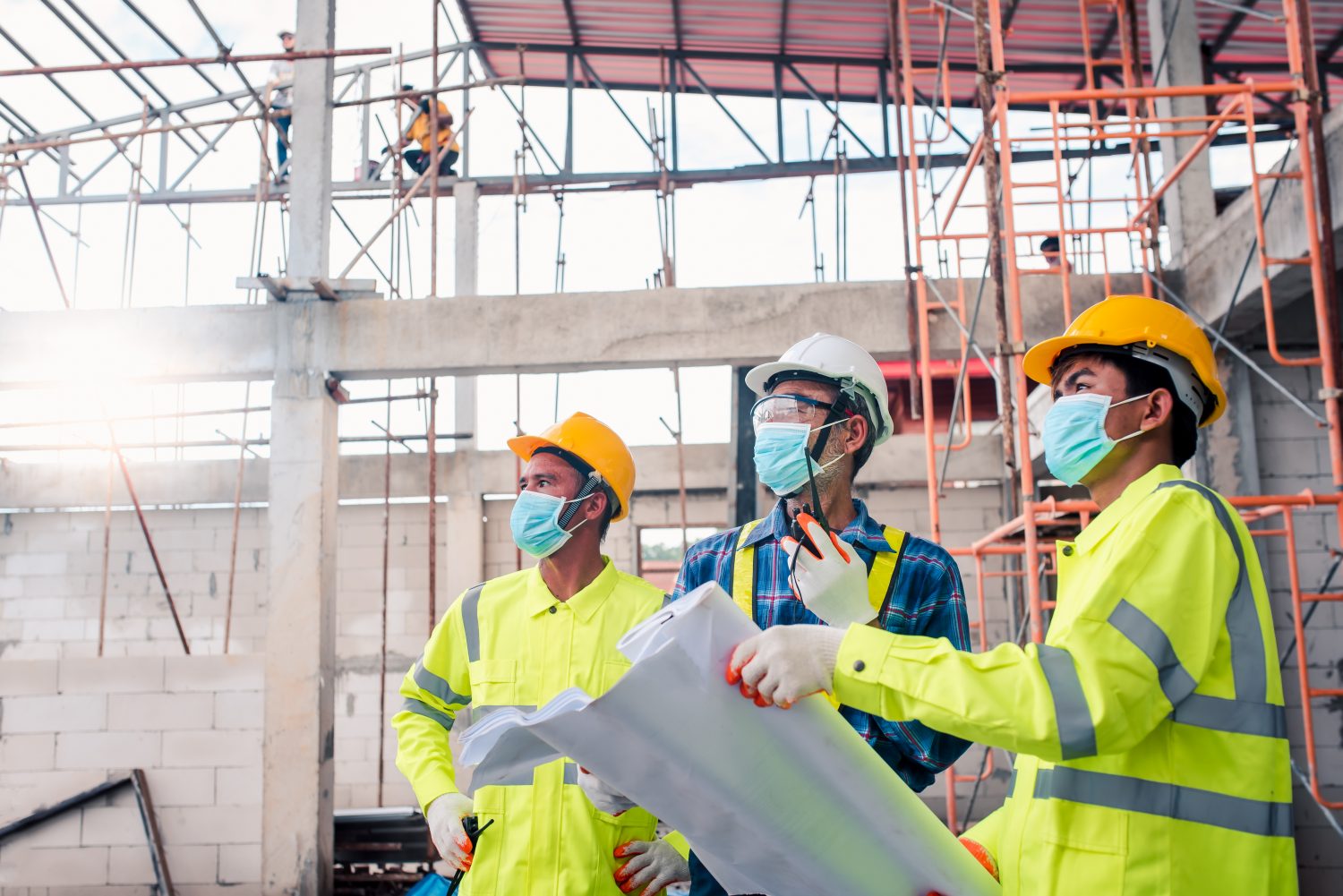

As part of our campaign to deliver #FairFlexibleFutures for people in everyday jobs, we’ve been exploring how a range of organisations have learned from, and responded to, the pandemic. Here’s an insight into BAM Nuttall's experience.
BAM Nuttall is part of the Royal BAM Group, one of Europe’s largest construction companies. The company employs over 3,000 people across 100 projects, aiming to create sustainable environments that enhance people’s lives. Remote and flexible working is rare within the construction sector, which has historically been based on a clock-in, clock-out, on-site way of working.

Rob Lewis is BAM Nuttall’s framework development manager. He heads up the York office, overseeing around 50 people. He has long believed that flexible working is possible, and even desirable, within the construction sector.
Life before lockdown
Rob’s team already had access to both informal and informal flexibility in the pre-Covid-19 days. Some members of staff worked part-time, and there were no formal start and end times; the assumption was that as long as the work was done, the timings could be fluid.
Additionally, 18 months before the pandemic, Rob instigated a system in which every member of the team were allocated a set ‘working from home’ day (with their input into which day). Mindful that this was a radical move for a construction company, Rob provided clear guidance on expectations.
Introducing a work from home day for on-site supervisors was more complex. However, discussions with the team highlighted that around 20% of their workload was planning, paperwork and documentation, which could be chunked into one day and carried out from home. This had the additional effect of making their on-site time more focused – and gave more junior colleagues the chance to act up.
The pilot highlighted the importance of having the right mindset, with some members of the team initially slipping into referring to their non-office day as a ‘day off’ and others struggling to work well remotely. This was identified by staff survey and open conversations, and tackled on an individual basis so that the arrangement could be made to work for everyone.
Reacting to the crisis
The pilot meant that the York team were able to move swiftly into full-time remote working when lockdown was announced. They had the technology and equipment in place and were already operating as a paperless office.
In the weeks that followed, Rob and his team ran surveys to understand the challenges that people were facing, covering a range of topics from homeworking environment and family responsibilities to medical constraints and emotional wellbeing. They also invested in extra office furniture and technology, to ensure people were correctly set up for long-term homeworking.
One key learning from the early weeks of lockdown was that communication was more difficult, and the lack of informal ‘kettle talk’ was having a knock-on effect on team morale and cohesion. It also became clear that a number of employees were struggling with the day to day reality of lockdown (rather than work issues). The team dealt with this by putting in place regular virtual check-ins and social events, picking up the phone to check how people were doing, and offering further advice and support through an employment assistance programme.
Supporting employees to keep working
There were two main ways in which Rob and his team supported their employees to stay in their jobs during lockdown.
Firstly, they created flexibility around when roles were delivered; as long as the work was done within a reasonable timeframe, they were relaxed about specific timings. This supported those with children to work around the needs of their families. And secondly, Rob made it clear to all members of staff that if at any point they needed time out, they were to take it, no questions asked and no explanations needed.
As a result, the whole team were able to keep their jobs and manage them around their personal circumstances.
Learning from the experience
Rob’s work to increase flexible options for the team, both before and during the lockdown, is reaching wider than the York office. He is now talking to the business leaders about rolling out his pilot across BAM Nuttall as a whole, and shares insights from his regular surveys with other leaders to help them understand the impact on the workforce.
One concrete example of this has been in the way that the company manages apprentices. Rob’s team identified that the York office’s apprentice was struggling more with lockdown than others; he has shared this with BAM Nuttall’s development and training department, who oversee 300 apprentices, and is now having monthly meetings with the department to give extra support.
A plan has been put in place for transitioning back to the office when circumstances allow. Some members of the team, for mental or physical health reasons, will remain based at home, but Rob is mirroring his pre-Covid system by asking them to have a ‘working in the office’ day. Those who can go in have been split into two groups and will work under a rota system of two weeks in, two weeks at home, to allow safe distancing.
Rob believes that the open conversations and shared trust which developed during lockdown will be key to making a success of this new blended model of working. Her will continue to seek regular feedback from his team about what is working well and what could be done better, and is open to refining the model as time goes on.

Lucy Davidson is an office manager at BAM Nuttall. Lucy is tasked with organising the office, maintaining a shift schedule and resolving any resourcing issues on the ground.
Life before lockdown
Before Covid-19, Lucy was in BAM Nuttall’s York office full-time. Commuting in from Lincoln, Lucy would stay in York during the week and return home on Friday for the weekend.
There was some flexibility in hours. As construction sites often started working earlier, Lucy would start at 7:30am in the office to effectively support site staff. This meant she could finish earlier in the afternoon.
In the middle of 2019, a work from home day was introduced. After submitting her preferences, Lucy was assigned her first choice: Fridays at home. Working one day remotely meant Lucy could travel home to Lincoln on a Thursday night and achieve a better work-life balance.
Working through the crisis
When lockdown was announced, Lucy began working from home full-time. Lucy initially struggled working remotely from her dining room table. However, by creating a proper work environment with a desk and chair, Lucy found she could work productively.
As restrictions eased, Lucy adopted a more blended pattern. By working two weeks in the office and then two weeks from home, Lucy could reduce her travel with her apprentice covering the weeks she was out of the office. Lockdown encouraged Lucy to evaluate her role and where work could be done most effectively: leaving the administrative tasks for home-working and training and people led tasks for the office.
Now as the apprenticeship has finished, Lucy works on a two-week rota: three days in the office in the first week and two days in the second. This means Lucy is in the office every week to ensure everything runs smoothly, but allows her more time at home.
Support from employers
When Lucy initially started working from home, she felt isolated and detached from the rest of the team. Raising this issue to her manager, Lucy began having regular check-ins and informal conversations with the team to increase inclusivity.
Lucy also struggled to draw a line between home and work, feeling the need to be in front of her laptop all the time. After a 1:1 conversation, Lucy was encouraged by Rob to take a proper lunch break, stepping away from her workspace. This was all part of the process in Lucy realising she was trusted to work in her own time; manager mentality had shifted from focusing on hours to output. BAM Nuttall’s culture of trust meant Lucy didn’t feel micromanaged and gave her the confidence to work independently.
Learning from the experience
The pandemic has made Lucy realise she was spending too much time away from home. By being obliged to revaluate where her role could be done, Lucy has had greater flexibility where she works.
BAM Nuttall’s support and flexible culture has allowed Lucy to achieve a better work-life balance. Moving forward, Lucy would like to continue working a hybrid pattern of office and home working.
This case study is part of a series supported by The National Lottery Community Fund, as part of their Emerging Futures Fund
Click on the links below to read the other case studies in the series: